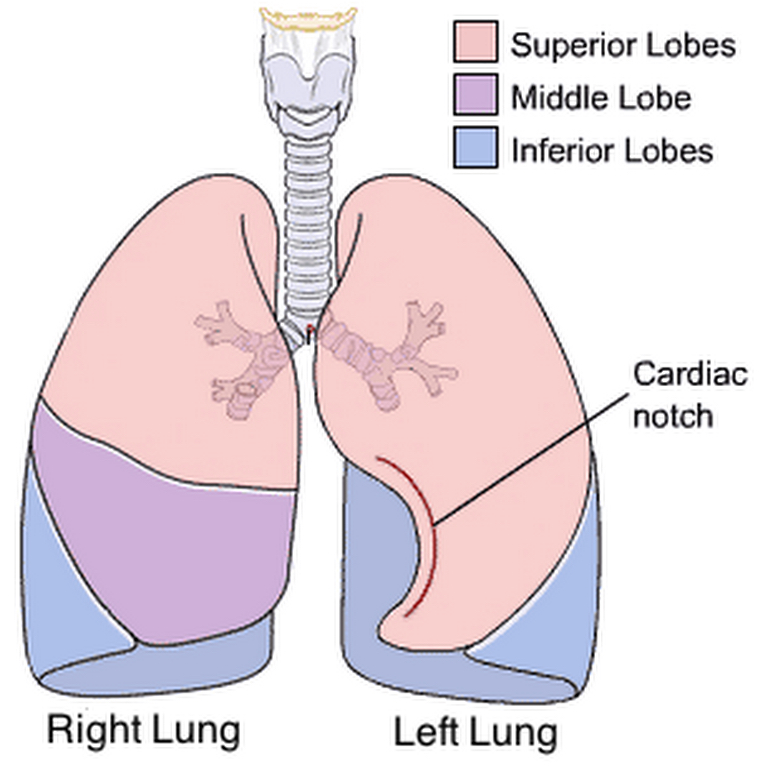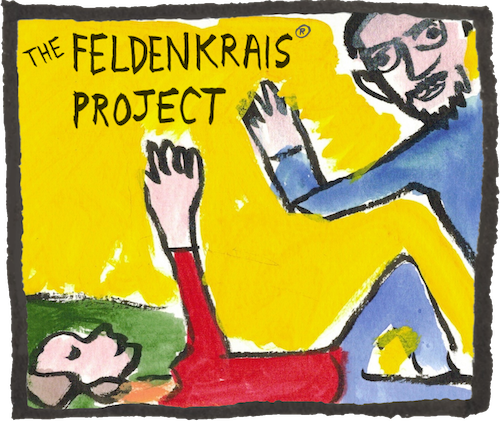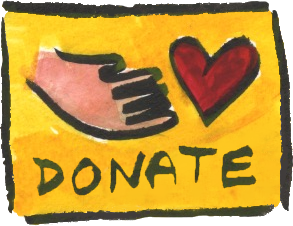Thinking and Breathing (Patrons)
Back-lying and seated, improving awareness and use of the whole breathing apparatus by directing attention to specific anatomy while experimenting with "stepped" breathing and different body configurations. Starts with an essential anatomy lesson that cultivates concepts and imagery used throughout the ATM lesson. Illustrations are below the lesson notes.
We offer over 50 free lessons, but this one's just for our Patron-level donors. You can learn about it in the free lesson notes and comments below, but to access the audio you’ll need to join The FP as a Patron. Learn more
Here are the screenshares mentioned in the anatomy lesson that begins this recording:
The two lungs are really quite different sizes. The right lung has three lobes and is larger. The left has two lobes, leaving room for the heart. The bronchi branch out to the lobes of the lungs from the base of the windpipe. image source

The diaphragm is vaulted when it’s relaxed, and flattens down when you inhale.
When you inhale the sternum rises, the chest thickens and broadens, and the diaphragm tightens, pulling down toward its connections with the lumbar spine.
On subsequent listenings you may wish to begin at the ATM lesson, which starts just after the 9-minute mark.
Got a question for Nick, or a thought about this lesson?
Use the comments section below! Public comments build our community and help search engines find us.




I have scoliosis to right so I found the lesson a little harder on the right side or to rephrase easier on the left.Did Moshe address scoliosis?
Thanks
Yes. It’s also expected that everyone will find noticeable differences between the sides based on their own history and habits (not just that all humans have asymmetrical lungs). Scoliosis can generally be helped through exploring a broad variety of Feldenkrais ATM lessons, since spinal structure is affected by our muscular habits, which we tend to see change significantly over time with Feldenkrais study. For specific personal recommendations you may wish to find a local practitioner for 1-to-1 work.
I thought this was an inspired lesson. I have a copy of the Feldenkrais book but the detailed introduction with the videos made the lesson so much easier to feel aware of what was happening .Many thanks for this one Nick. Ann
Are any lessons directing help for trouble sleeping
[2024 UPDATE: Our new “little dip” of Six Lessons for Anxiety may be our best answer to this question.]
I haven’t taught directly to this topic but better sleep, and getting back to sleep more easily, are a frequent effect of Feldenkrais study. To maximize that benefit you might…
I learned so much about breathing anatomically and experientially. I’m a singer so this is extremely helpful. The information about breathing and longevity was fascinating.
What a great lesson for stretching and noticing the rib basket and the lungs! I never knew about the size difference between the lungs, and there are some great descriptions creating visuals that helped me understand the inside of my body better. very cool. I really noticed some stuck spots and loved all the exploration with the diaphragm.
Very interesting lesson 🙏
I felt my left side much easier than the right , especially with the side sitting at the end . However , now after completing the lesson my whole body is way more comfortable and balanced than usual .
I’ll do it again in few days .
Thank you for the beautiful delivery .